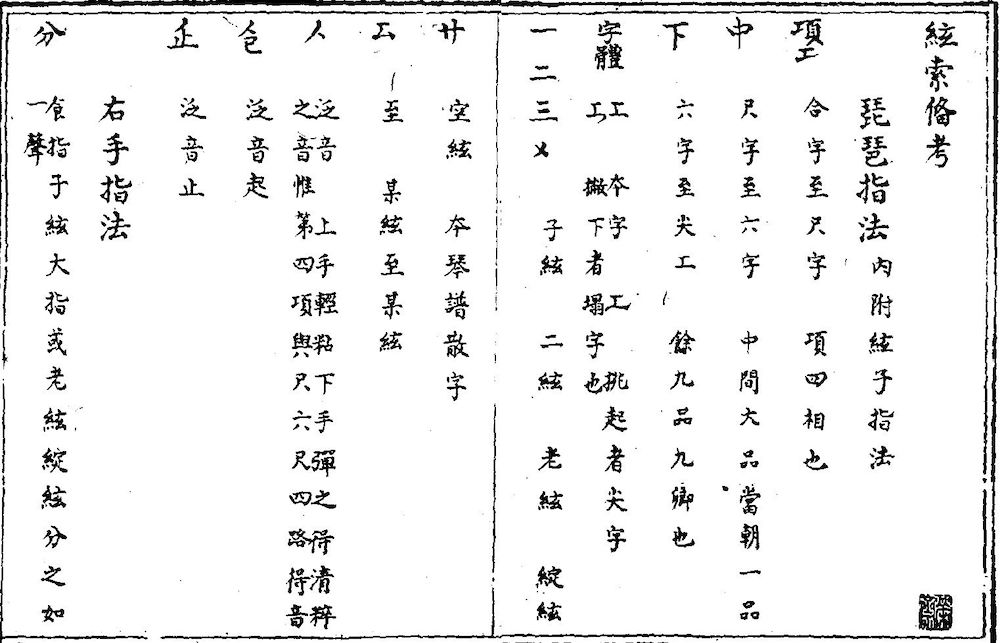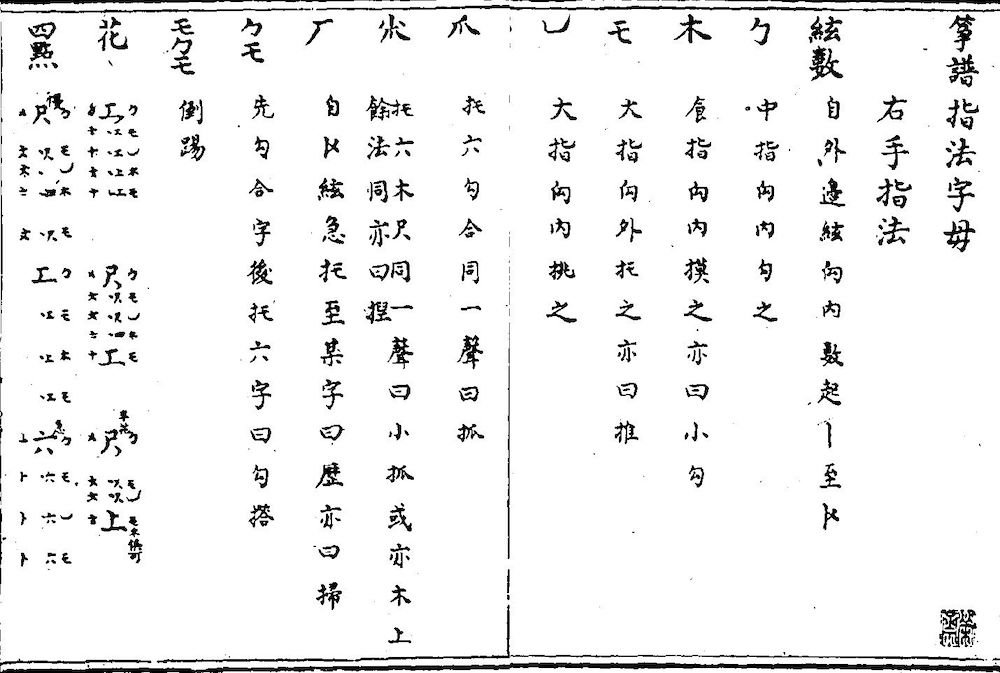Xiansuo beikao 弦索備考 (also written 絃索備考) "Reference collection of string music" is a collection of music scores for orchestra compiled by the Mongol Rongzhai 榮齋, who lived during the late Qing period 清 (1644-1911). The manuscript of the book was finished in 1814 and includes the scores (gongchepu 工尺譜, a special reading) for 13 pieces.
The collection was compiled because, traditionally, there were no written scores for orchestras until the time because music was only transmitted orally. The Xiansuo beikao is therefore the first written collection of music pieces for orchestra. The pieces includes seem to date at least from the eighteenth century. The collection has a length of 6 juan long and is divided into ten volumes. It begins with a description of "finger methods" (zhifa 指法) and a complete orchestra score (zongpu 總譜) of the two tunes Shiliu bang 十六板 and Fenchuan 岔串. The rest of the book contains the separate scores for single-played instruments like the pear-shaped lute (pipa pu 琵琶譜), the three-stringed lute (xuanzi pu 弦子譜) or the fiddle (huqin pu 胡琴譜), with 11 tunes for these instruments, and 13 tunes for the large zither (zheng pu 箏譜).
 |
Signs for tablatures for pear-shaped lute (pipa 琵琶), part. |
 |
Signs for tablatures for zither tunes (zhengpu 箏譜), part. |
The Shiliuban 十六板 score includes six parts for the pear-shaped lute, three-stringed lute, the fiddle and the zheng zither, as well as a basic gongche tablature and the baban tabulature 八板譜 for all instruments.
Many of the tunes were very popular and already circulating for a long time. The most important are Yue'er gao 月兒高, Haiqing 海青 and Pu'an zhou 普庵咒. For some tunes, it is explained whether there were different versions in the eastern and western quarters of Beijing.
In 1955, the Yinyue Press 音樂出版社 published a modern version of the Xiansuo beikao in which the tunes are transcribed into modern Western five-line staves (wuxian pu 五線譜) and Chinese single-line staves with numbers (jian pu 簡譜), with the title Xiansuo shisan tao 弦索十三套.